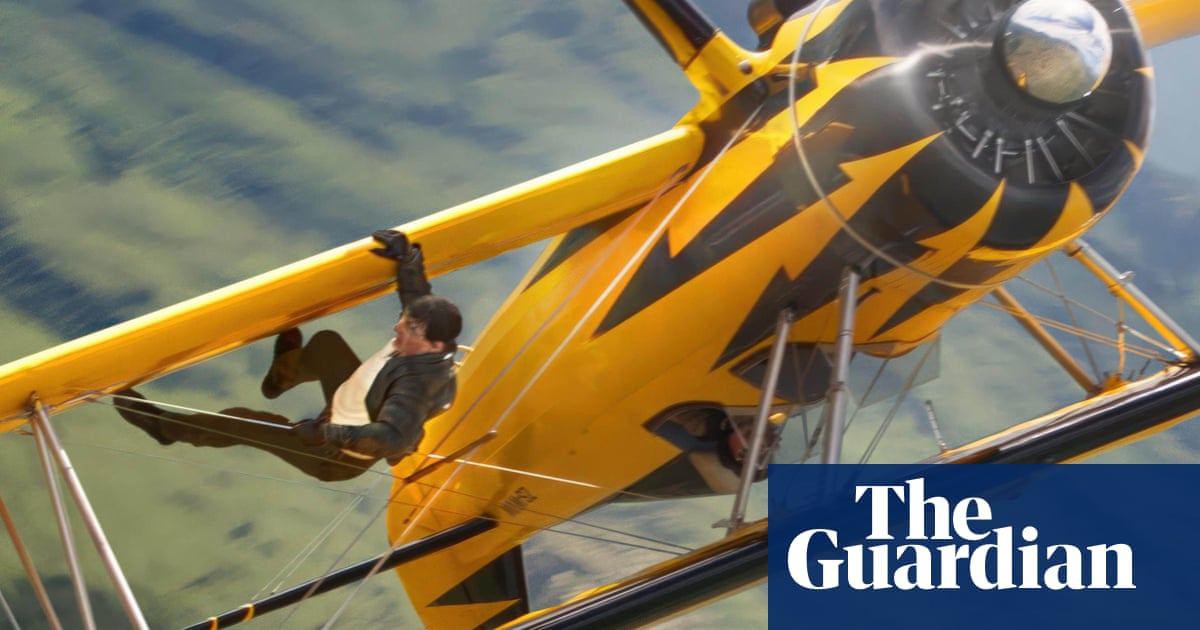Tom Cruise got stuck on the wing of a biplane shortly before it ran out fuel during the filming ofMission: Impossible– The Final Reckoning, the director of the eighth instalment of the action franchise has revealed.
Speaking to an audience at theCannes film festivalhours before the film’s premiere, director Christopher McQuarrie recounted the filming of a stunt sequence in which Cruise, in his long-running role as the field agent Ethan Hunt, walked between between the two wings of a biplane as the aircraft was mid-air over South Africa.
Cruise, who at 62 continues to insist onperforming his own stunts, had himself come up with the action sequence where he would float “zero-G” between the wings of the plane and dismissed the initial warnings of professional wing-walking stuntmen, said McQuarrie, who has directed the actor in the last four Mission: Impossibles as well as the Jack Reacher series of action films.
Wing-walking is extremely risky because the human body starts to break down after about 12 minutes due to the impact of wind at extreme speed and the difficulty of breathing in dispersed molecules, explained the director, who was overseeing the stunt from a helicopter flying alongside. “It’s literally like two hours in the gym.”
Nonetheless, Cruise had signalled to McQuarrie that he wanted to continue filming after the 12-minute mark had passed.
“There was a moment where Tom had pushed himself to the point that he was so physically exhausted, he couldn’t get back up off the wing,” McQuarrie said, speaking alongside Cruise in an on-stage interview at Cannes. “He was lying on the wing of the plane, his arms were hanging over the front. We could not tell if he was conscious or not.”
In McQuarrie’s telling, the pilot communicated at this point that the plane had only three minutes’ worth of fuel remaining, but that the plane couldn’t have landed with the actor lying prone on the wing.
“We watched Tom as he pulled himself up and stuck his head in the cockpit, so that he could replenish the oxygen in his body and then climb up into the cockpit”, McQuarrie said. “No one on earth can do that but Tom.”
Cruise, who swooped into the Palais deFestivalsas part of a multi-stop promotional tour also including stops in Japan, Korea and London, talked up his prowess as he joined the director on stage. “I don’t mind encountering the unknown,” he said. “It’s just an emotion for me and it’s something that is not paralysing.”.
McQuarrie, who first made a mark in Hollywood as the scriptwriter behind 1995 cult thriller The Usual Suspects, bemoaned that the US film industry in its current state was “driving a wedge through cinema” by increasingly forcing film-makers to choose between seeing themselves as artists or as entertainers.
He questioned the claims of streaming giants to be “saving Hollywood”, saying that Netflix and co were “cutting the audience off from the history of cinema” by prioritising their own productions over classic films on their home pages.
“The number of people I meet who have never heard of The Best Years of Our Lives, who have never heard of William Wyler’s The Big Country, who have never seen Cool Hand Luke, and whose history of cinema begins at Star Wars or Pirates of the Caribbean.”
